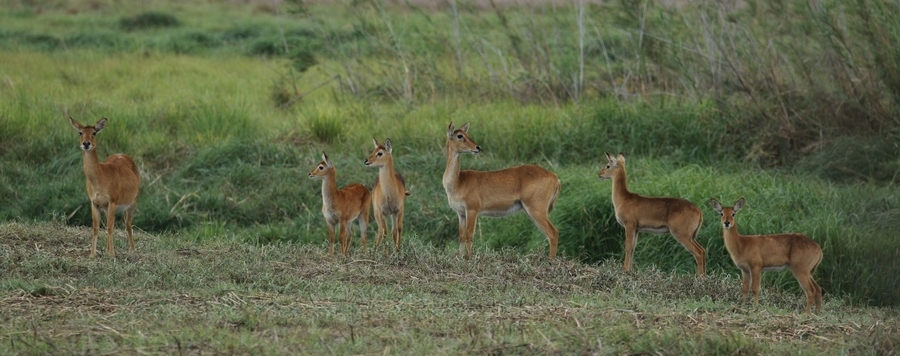
Alarming decline of bovids in Kasanka National Park, Zambia: a case study of the puku antelope (Kobus vardonii)
Knowledge about antelope populations and their status is a key for conservation. In November 2019, we used distance sampling to perform a re-survey of the bovid species in Kasanka National Park, Zambia, with a focus on the puku (Kobus vardonii). Data collection and subsequent analyses were of the same design as in a previous survey in 2009–2010. This allowed for the direct comparison between survey periods, especially for the data collected in November 2010 and 2019. The estimated puku population size decreased from 5,038 (range 3,268–7,238) animals in 2009–2010 to 819 (range 250–2,708) animals in 2019, representing an 84% decline. Smaller group sizes were observed. Changes in population structure (decline in male abundance, fewer male groups) and spatial distribution (decline in population density, especially
along the park boundaries) of puku showed signs of increased poaching activities in Kasanka National Park. Also, puku became more vigilant and demonstrated significantly longer flight distances in 2019 in comparison with 2010. A strong decline in puku in combination with clear signs of poaching, as well as the reduced species richness and sightings of other bovids, should become an agenda for long-term conservation of Kasanka National Park.






